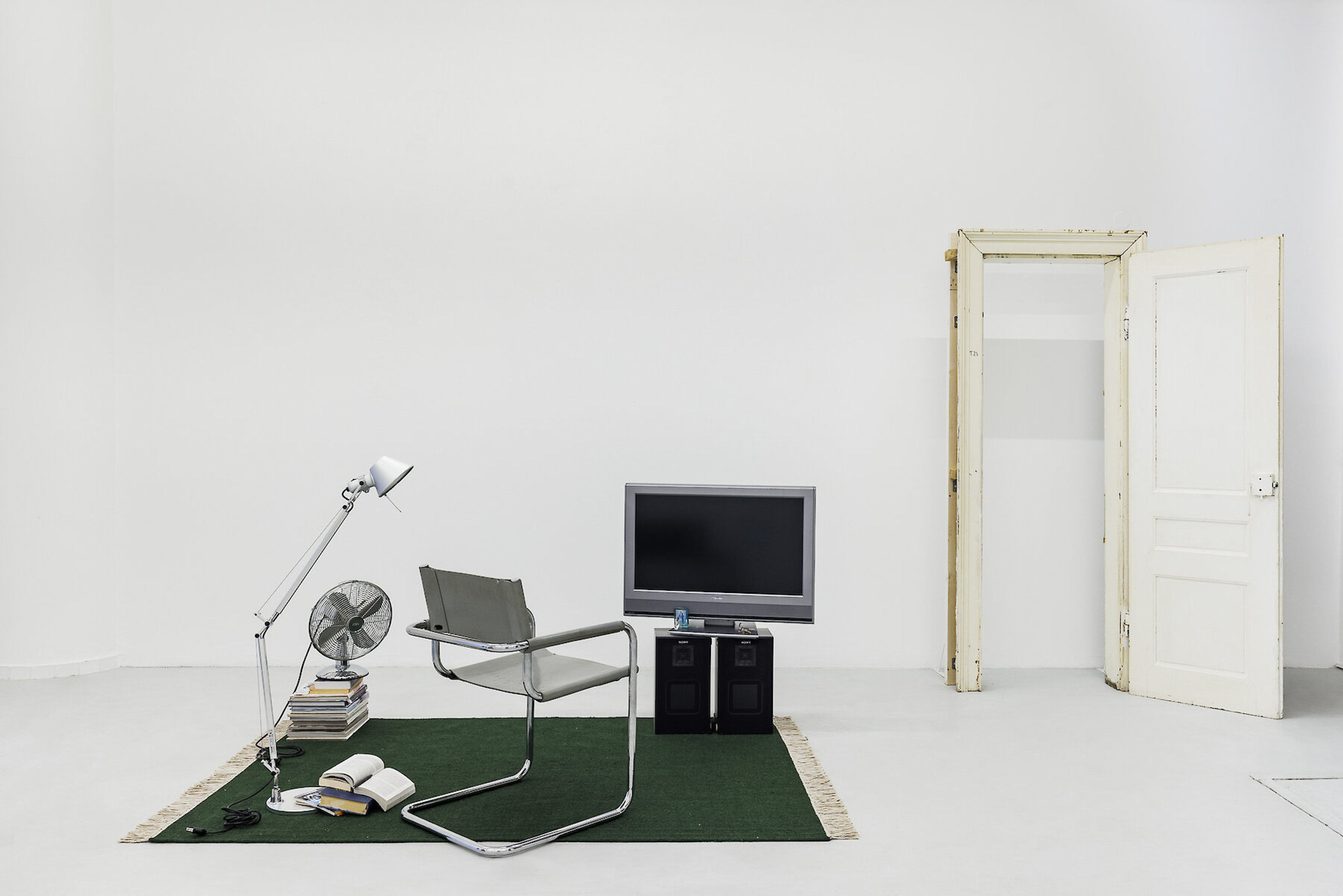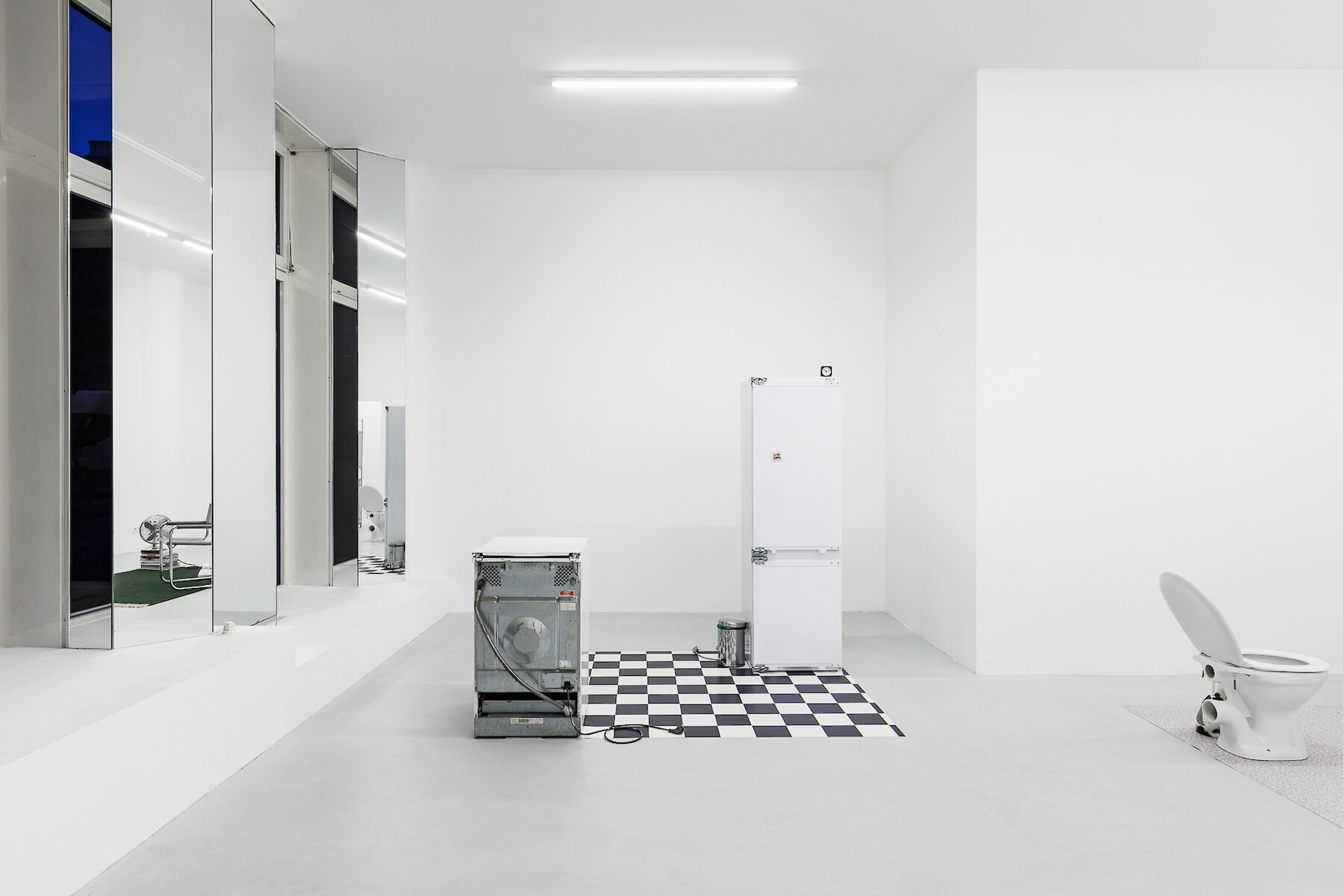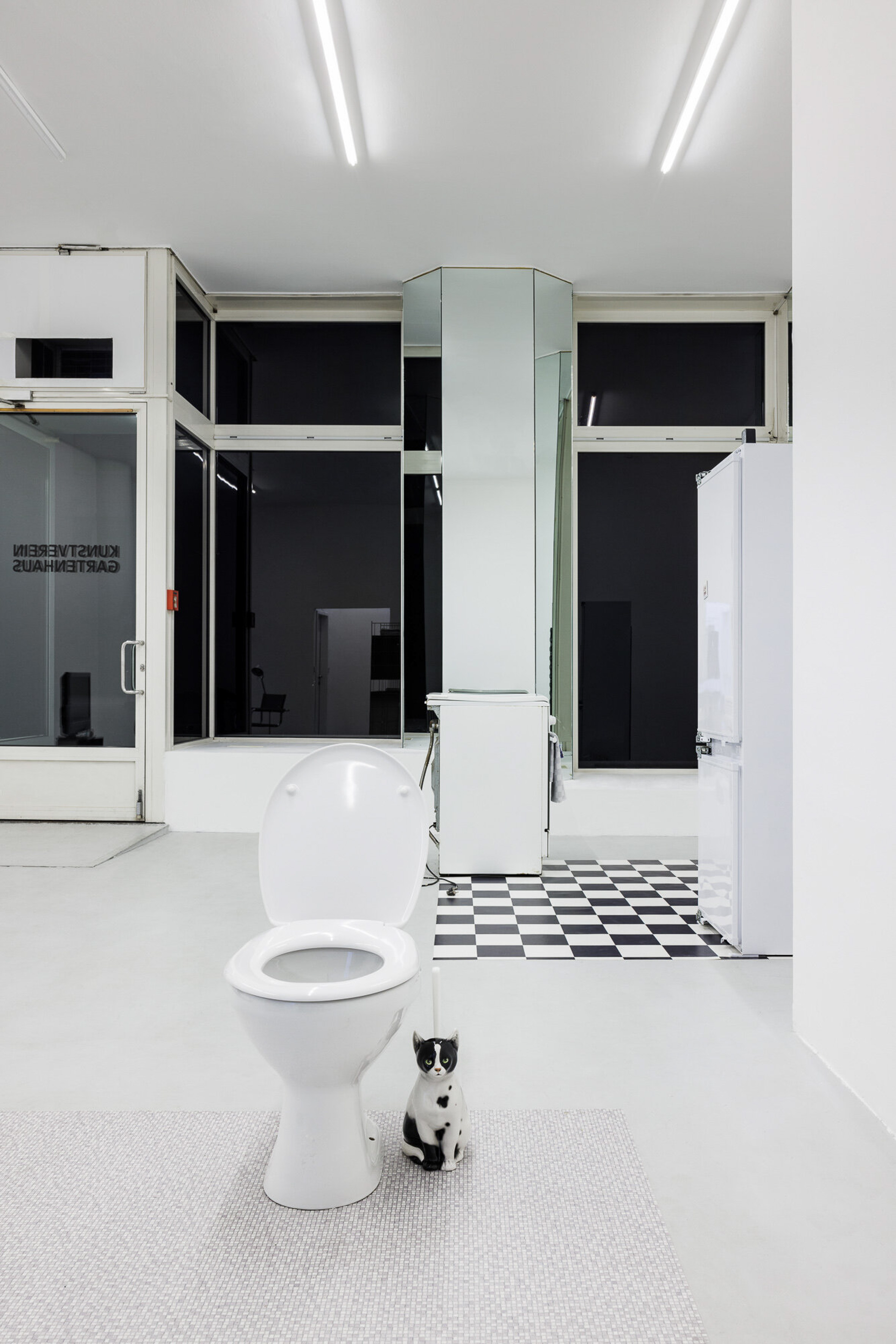YYYYMMDD >>> BACK HOME <<< >>> SELECTED FEATURES <<< >>> HIDDEN ARCHIVE <<<
[20220928]
APPLIANCE by OLIVIA ERLANGER at KUNSTVEREIN GARTENHAUS [from 20220909 to 20221029]
[Photos: kunst-dokumentation.com]























“In these rooms, your imagined world: you slumber even while you wake. Consumed with desire for a life lost and, maybe, never lived. To be free of the body is to run without a hum, without the worry of a missing heartbeat. There’s no growl of an empty stomach, no ache of a strained eye. There’s no scent of lactic release or soreness from a sprained and twisted spine. There’s no baited breath walking down these halls with fear and confusion. No internal clock tick ticking away.” [HOUSE’s monologue from Humour in the Water Coolant*(1)]
Transforming the space of KUNSTVEREIN GARTENHAUS into a complex dramaturgy, Olivia Erlanger’s Appliance is a project comprising a play, an installation and a publication.
Written by the artist and performed on the opening night, the play Humour in the Water Coolant is the story of a woman haunted by the appliances in her new home. Using the play as its starting point, the installation lingers between domestic suburban interior and theatre set. The play’s title references the aqueous humour of the eye and mechanical fluids found in engines, revising the metaphor of a body as architecture to body as appliance. Inferring different attitudes, class and aspirations through object placement and interior organization, the installation unfolds as an archive, a reading room and a space for action. Erlanger presents an environment inspired by Norman Klein’s idea of “scripted space” and informed by historical exhibitions such as MoMA’s Houses of the Future (1932) and Good Design (1950). Here, the gallery becomes a fractured, transparent house offering a psychic isometric view. The layout and function of different rooms of the home are defined by their appliances rather than perimeter walls.
Set during a séance to rid the home of its haunted aura, the play explores the panpsychic potential of domestic objects. The appliances, now able to speak, express their emotional lives, rife with dissatisfaction, sadness, and ultimately a desire to connect and love. The psychological effects of their declining usage and functionality antagonizes the idea of technological improvement as a positive development, reframing it as a means of escape. What does aging mean for these objects “born” on the assembly line, whose parts are easily replaced or whose obsolescence is already planned?
The exhibition is accompanied by a publication of the same title, published by KUNSTVEREIN GARTENHAUS’ imprint Wild Seeds. The book Appliance includes five new essays by Erlanger, each focusing on the history of a domestic appliance and how it is constructed in the cultural imagination. The essays weave together anecdotes and personal narratives while examining these appliances’ deployment in art history, cinema, and pop culture. The book also includes Humour in the Water Coolant. Throughout the duration of the exhibition, the public is invited to read the essays and play in the space.
*(1) Written by the artist and performed on the exhibition opening night, the play Humour in the Water Coolant is the story of a woman haunted by the appliances in her new home. Using the play as its starting point, the installation in the gallery lingers between domestic suburban interior and theatre set. The play’s title references the aqueous humour of the eye and mechanical fluids found in engines, revising the metaphor of a body as architecture to body as appliance.
Set during a séance to rid the home of its haunted aura, the play explores the panpsychic potential of domestic objects. The appliances, now able to speak, express their emotional lives, rife with dissatisfaction, sadness, and ultimately a desire to connect and love. The psychological effects of their declining usage and functionality antagonizes the idea of technological improvement as a positive development, reframing it as a means of escape. What does aging mean for these objects “born” on the assembly line, whose parts are easily replaced or whose obsolescence is already planned?
Cast:
SOPHIE Camilla Schielin
HOUSE Luca Buechler
HOUSE mirabella paidamwoyo* dziruni
CRYSTAL Soshiro Matsubara
OVEN Luis Javier Murillo
FRIDGE
LAMP Sophie Alisha
SHOWER Ian Waelder
Olivia Erlanger (b. 1990, New York, NY) lives and works in New York City. Recent solo exhibitions include Home is a Body at Soft Opening, London (2020); Split-level Paradise at Bel Ami, Los Angeles (2020); Ida at Motherculture, Los Angeles (2018); Poison Remedy Scapegoat (with Nikima Jagudajev) at Human Resources, Los Angeles (2018); and mouths filled with pollen at And Now, Dallas (2018). Recent group exhibitions include Shell at Del Vaz Projects, Los Angeles (2022), The Kick Inside at Museum X, Beijing (2022); Liquid Life at Kistefos Museum, Jevnaker (2021); Psychosomatic at Various Small Fires, Los Angeles (2021); In Situ at Marianne Boesky Gallery, New York (2021); Winterfest at Aspen Art Museum, Aspen (2020); Haunted Haus at Swiss Institute, New York (2020); What do people do all day? at Kunsthalle Charlottenborg, Copenhagen (2020); No Space, Just a Place at Daelim Museum, Seoul (2020); and For a dreamer of houses at Dallas Museum of Art, Dallas (2020). Erlanger and Luis Ortega Govela co-wrote Garage (MIT Press, 2018), a secret history of the attached garage as a space of creativity, from its invention by Frank Lloyd Wright to its use by start-ups and garage bands. The following year, Erlanger and Ortega Govela directed a feature-length documentary, also titled Garage, based on the publication, which screened at the ICA London, London, and at Kunsthalle Charlottenborg, on Dis.art (both 2019). Additionally, Erlanger recently screened a new documentary Portrait of d’ (2022) at Del Vaz Projects, Los Angeles (CA), and at Ennejma Ezzahara, Tunis (Tunisia). She is currently working on her first narrative film.
[Text: KUNSTVEREIN GARTENHAUS]
©YYYYMMDD All content and design by Daniela Grabosch + Ricardo Almeida Roque unless otherwise stated. Images, Videos and Texts can only be used under permission of the author(s).